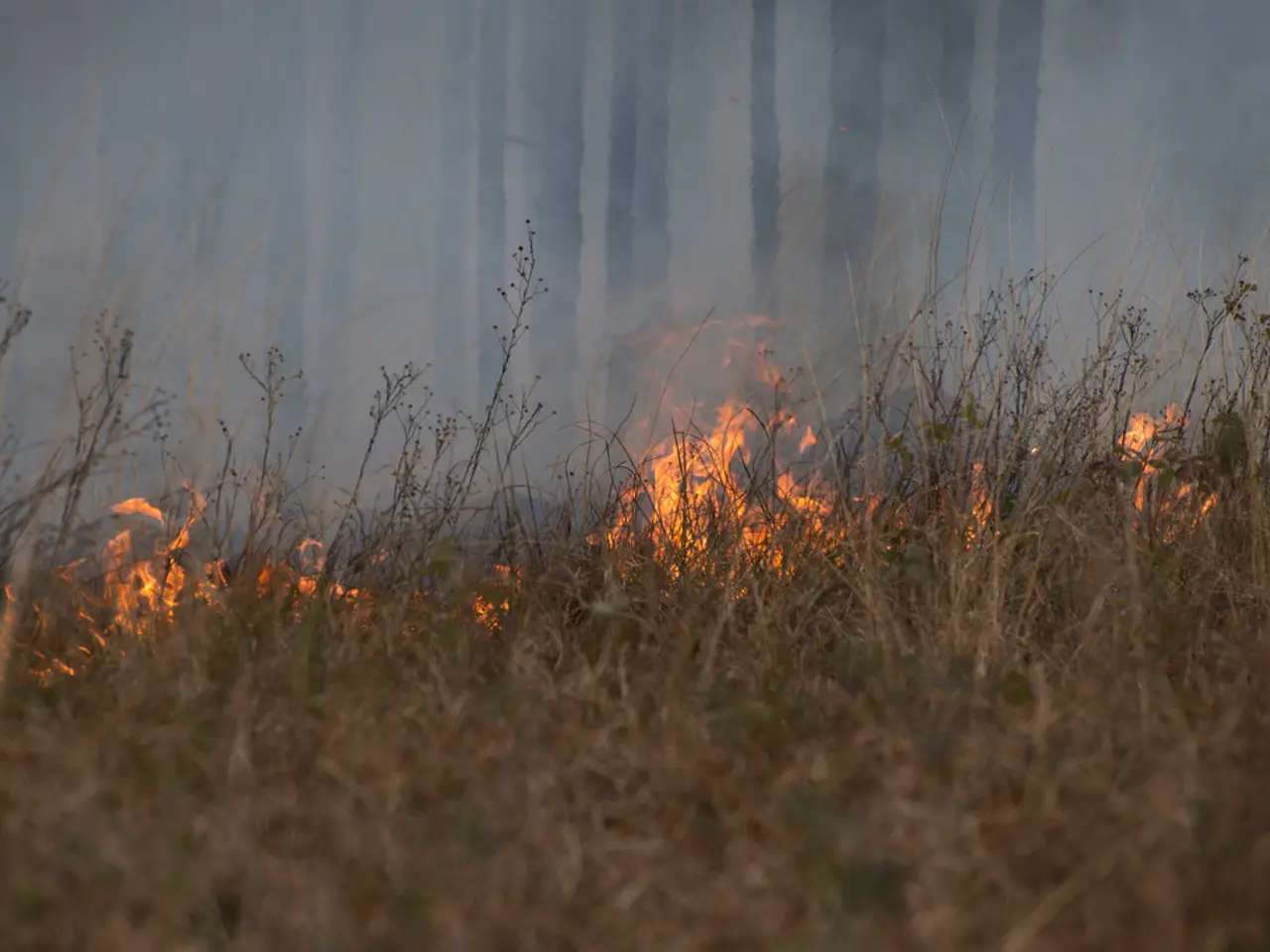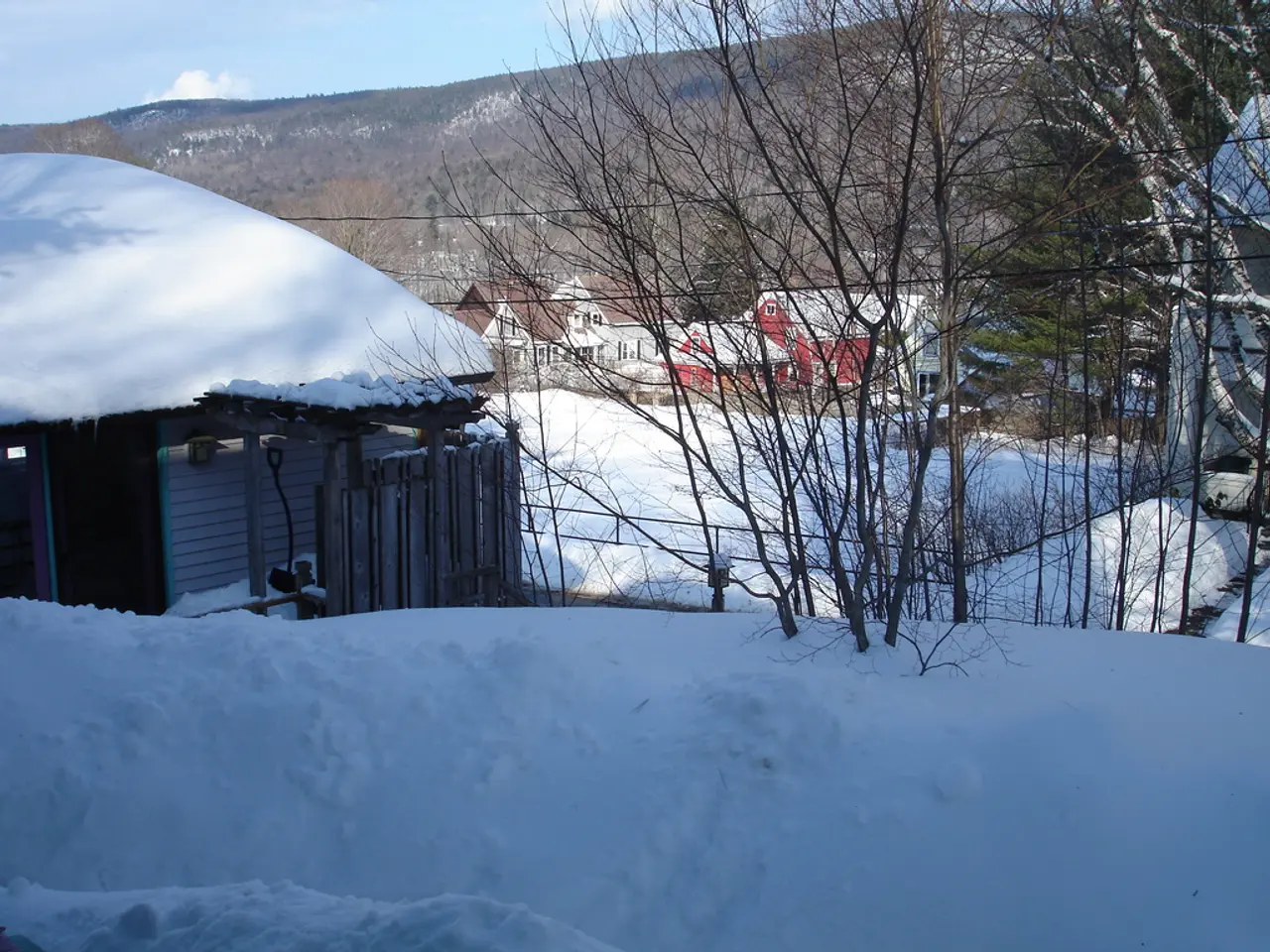Alert Issued for Risk of Crop Fires Due to High Temperatures
**Headline:** Heatwave Sparks Agricultural Fires Across Deux-Sèvres Region, Calling for Caution and Proactive Measures
In the heart of France's Deux-Sèvres region, a relentless heatwave has led to a surge in agricultural fires, causing widespread damage and disruption. The fires have razed hundreds of hectares of land, threatening crops and endangering the local community.
The SDIS (Sapeurs-pompiers de l'Indre-et-Loire et de la Vienne) of Deux-Sèvres have been inundated with interventions, with some of the busiest days seeing over 75 incidents handled. These fires, exacerbated by winds and drought conditions, are not only causing destruction but also putting a significant strain on emergency services.
The fires are particularly impacting agriculture, affecting all levels of society. The heatwave has led to harvest fires in fields, with sparks from striking flints turning into flames due to the high temperatures. This has underscored the need for proactive strategies to prevent such incidents during heatwaves.
To mitigate the risk of harvest fires, several measures are essential. First, it is crucial to avoid fieldwork during the hottest hours of the day, reducing the risk of fire outbreaks and protecting workers. French authorities have already banned fieldwork during peak heat hours to this end.
Second, high-quality weather forecasts should be used to anticipate heatwaves, allowing farmers to plan harvest times to minimize exposure to extreme heat and dry conditions that increase fire risk. Early harvesting, when moisture content in crops and fields is higher, can further reduce ignition potential.
Third, the maintenance of harvesting machinery is key to preventing sparks from flints or stones hitting metal parts, which can ignite dry crop residues. Considering reducing machinery speed or adjusting operations in fields known to contain flints can also help minimize friction sparks.
Fourth, clearing dry crop residues and maintaining firebreaks around fields can prevent fire spread if an ignition occurs. Irrigating critical areas ahead of harvest can also lower fire susceptibility during heatwaves.
Finally, equipping farms with fire extinguishers and water sources near harvesting zones, and developing emergency plans specifically for wildfire incidents during the harvest season, are essential for preparedness.
By implementing these measures, the risk of harvest fires during heatwaves in agricultural settings where flints or stones are present can be significantly reduced, protecting both crops and farm workers effectively.
In light of the current situation, a video report is available for those who wish to gain a firsthand understanding of the situation on the ground. As the heatwave continues, we urge everyone to exercise caution and adhere to these preventative measures to ensure the safety of our communities and our crops.
- The surge in agricultural fires in the Deux-Sèvres region, exacerbated by climate-change related weather patterns, highlights the importance of integrating climate-change considerations into environmental-science studies and forecasting, specifically weather-forecasting, to better anticipate and prepare for extreme weather events.
- As the heatwave persists, it's crucial to comprehend that science plays a significant role in understanding climate-change impacts on weather, and culture plays a role in how communities respond and adapt to these impacts, such as the incorporation of proactive farming practices to mitigate risk during heatwaves.
- The ongoing agricultural fires underscore the need for comprehensive environmental-science education encompassing both climate-change and weather-forecasting to foster a science-driven culture that prioritizes preparedness, adapts farming practices, and fosters resilience in the face of climate-change's effects on weather patterns.








